When and How to Prune Japanese Maple – 5 Tips and Tricks
-
Pete Ortiz
- Last updated:
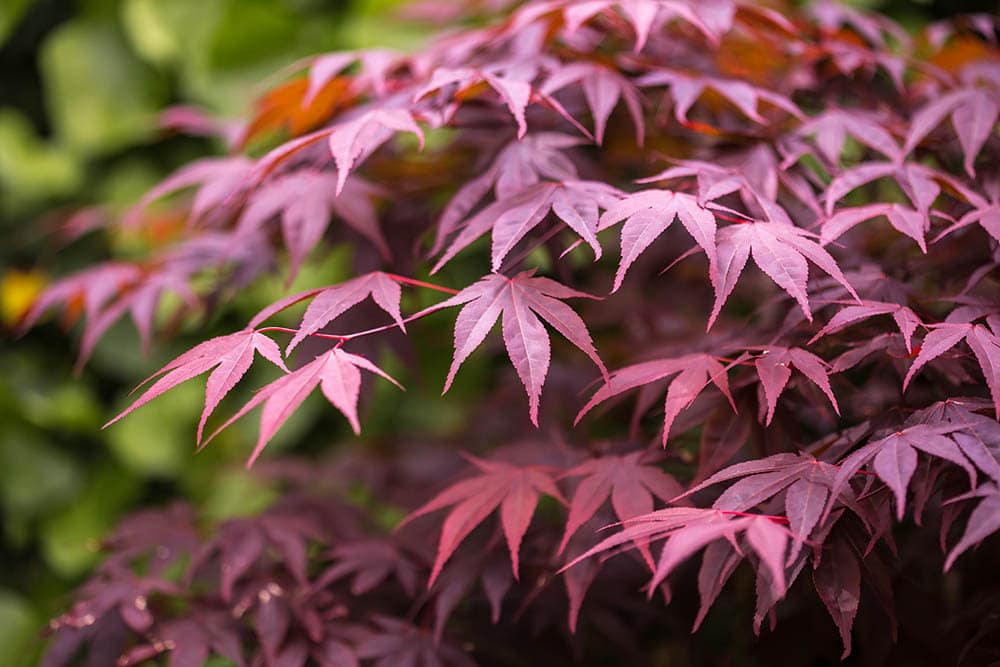
The Japanese maple is one of the most popular ornamental trees revered by botanists and gardeners all over the world. Depending on the environmental conditions, the tree can grow up to 40 feet long with broad leaves that add to the tree’s aesthetic appeal. Despite having minimal care and pruning needs, most people often wonder when and just how to prune it to increase its growth vigor.
This article will explore the pruning schedule of Japanese maple trees and the tips and tricks of pruning this ornamental tree for optimum results. Read on to learn more.
When to Prune Japanese Maples
These ornamental trees do not have a strict pruning regimen. However, the best time to shape and prune the tree is in winter or late spring. During this season, you get to see overgrown branches and the growing structure of the tree. Sure, you might have a better gauge of the branches that need trimming during summer; however, the high summer temperatures can have adverse effects on a pruned maple tree. So, it’s best to prune Japanese maple trees when temperatures are below 80 degrees Fahrenheit while ensuring you do not off-cut off more than 1/5 of the crown foliage.
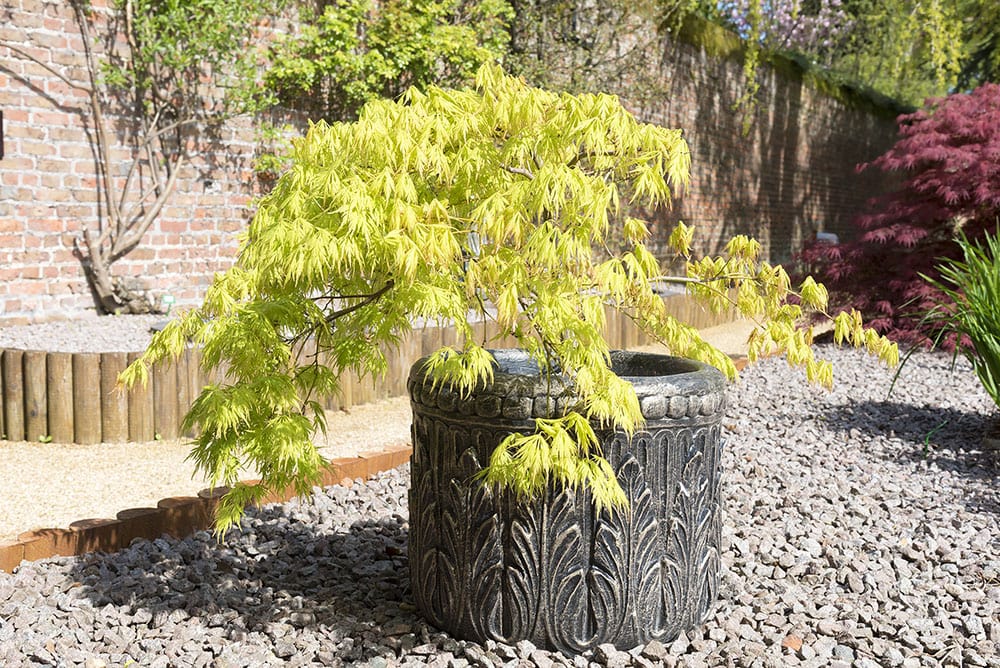
The Japanese maple tree doesn’t have a strict pruning pattern. You just need to carry out regular pruning to encourage new growth, which in turn, will promote root growth and establishment in the ground. Both summer and winter are widely accepted as ideal times for pruning the Japanese maple tree. However, pruning is best done between November and January (give or take a few weeks) when the tree is dormant. During these cold winter months, the tree will have less dense foliage, allowing you easier access to the branches.
Pruning should be done on mature trees, which are strong enough to avoid pruning complications. The idea is to remove any diseased or dead branches (which can be done during summer) while reducing the plant to a desired shape and size. Finer pruning can be done during the months of late spring or winter because sap production tends to be lower, thus minimizing the chances of the tree bleeding out and losing its growth energy.
What Tools Should I Use To Prune My Japanese Maple Tree?
- Joshua Roth Bonsai Pruners: These are a type of concave bonsai pruners that are popularly used to prune maple trees. Sure, there may be other cheaper varieties in the market but these tools are high-quality steel pruners. They are often used on Bonsai Japanese maple to make detailed and intricate cuts.
- Pass-Throughs: These tools are great when making cuts on a plant that is a bit larger and when the cut doesn’t need to be precise. If you use this tool to cut anything thicker than a finger, you will have to use a saw and make sure the pass-through is sharp enough to handle the job.
- Rubbing Alcohol and Paper Towels: These are perhaps the most underrated tools in pruning. While most people often forget or skip this step, you should wet a paper towel with rubbing alcohol and apply it to the wound after pruning. As you may have gathered by now, pruning is often done to remove any dead or diseased branches. If the tools you use are not cleaned, you risk transferring the infections to other plants in your yard. So, it is pertinent that you clean your tools before and after making any cuts on your maple tree. Also, ensure that you clean your pruners between every tree.
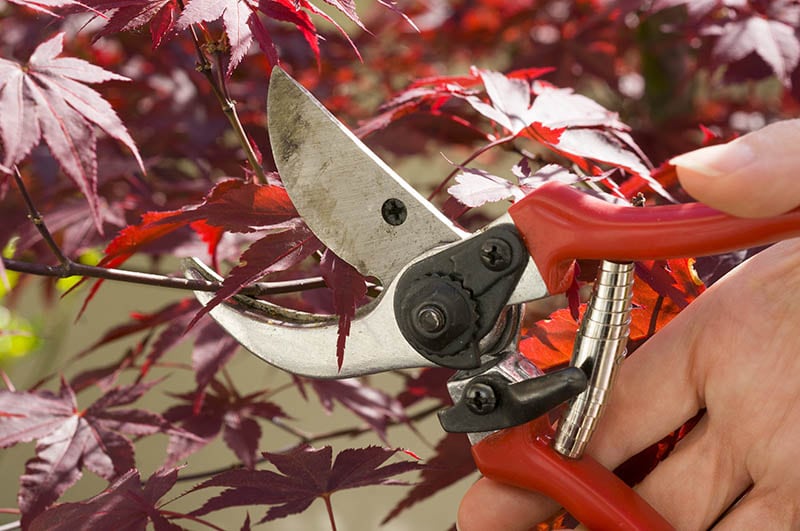
The 5 Tips on How to Prune Upright and Laceleaf Maple Trees
The Japanese maple grows in two varieties: the upright and laceleaf maple tree. The laceleaf variety grows in a weeping structure with leaves that appear lacy. Their cousin, the upright maple tree, grows upright and features more solid leaves. Both maple varieties grow in harmony with a unique branch growing patterns that require frequent pruning to maintain the shape. However, it is best to prune maple trees with their natural growth patterns.
After identifying the specific cultivar and the shape you intend for your tree, the next step is trimming your plant. Here is how to go about it:
Pruning Upright Maples
1. Remove the lower branches
Lower branches tend to crowd other shorter shrubs or limit movement on a walkway and work your way upwards inside out. Start at the very bottom of the plant near the center and work your way up from the middle outward to each side.
2. Remove any diseased or dead wood
This step also involves cutting off any jutting branches that can ruin your plant’s desired shape. Depending on the plant size, you can use loppers or pruning shears to cut away the dead branches. Loopers are great for larger tree branches while pruning shears are ideal for the smaller ones. If you are having trouble identifying dead wood branches, just look for any branch that doesn’t produce leaves throughout the year and is gray with a brittle texture.
3. Remove excess branches
For optimum growth, ensure that the healthy branches have enough space to grow and expand. However, this will likely increase the bulk of the tree requiring pruning. Simply remove any overlapping branches. Try to be as even as possible as you thin the tree for a more balanced look. If left to their own devices, overlapping branches from the Japanese maple can rub against each other, chipping their barks and consequently exposing the plant to pests and disease-causing organisms.
4. Position new growth areas in the bud
When tree buds grow and mature, they become dominant branches. So, if your maple tree has started developing buds, use your fingers to direct them where you want them to grow. If growing in an awkward hard-to-reach area, you can also use your fingertips to remove any buds that may overgrow when fully mature. Japanese maple tree buds are usually tiny and red in color. They can be found jutting out from tree branches.
5. Contact landscaper if needed
If you notice your Japanese maple tree is unable to occupy the designated space, do not excessively trim the sides or cut the tree down. Instead, contact a landscaper to uproot and replant in an area with enough room to grow and develop. Ensure the tree trunk doesn’t exceed 2 inches in diameter. If the tree is young, your best bet would be to hire a professional for assistance.

Pruning Laceleaf Maples
Unlike Upright Japanese Maple trees, pruning the laceleaf tree is slightly more complicated. There is also a lot of conflicting information when choosing the correct method of pruning this maple tree variety. Some people believe it is unnecessary to prune into a ball of foliage. On the other hand, some gardeners tend to over-trim the tree leaving the plant with very little foliage. Whichever the argument, it is vital to preserve maple trees’ natural harmony while facilitating optimum growth.
1. Remove dead or overlapping branches
Similar to pruning the upright maple tree, start by removing any overlapping or dead branches.
2. Position the buds in the direction you want them to grow
Doing this will help with the shape of the maple. However, remember to avoid trimming any branches with a diameter that is thicker than that of the trunk.
3. Separate the dense laceleaf branch layers
Since this maple tree species has a complex branch system, start by separating the layers. Cut off any branches growing below and above the main stem that does not agree with the aesthetic appearance of the maple tree. If the branches are twisted and curved at an awkward angle that does not follow the cosmetic pattern, they should be removed.
4. Make a veiled top
Usually, the top section of the maple tree forms a protective top that protects the plant’s foliage. You should avoid cutting off the top. Instead, focus your efforts on the sides and center to help the tree retain its natural shape.
5. Finally, replant the plant if it grows too big for its space
Just like the upright maple tree species, the laceleaf also requires enough space to thrive. If it outgrows its current space, do not prune or cut the canopy, you should also ask for help from a certified landscaper.

Factors That Determine What to Prune on Japanese Maple Trees
Before attempting any pruning practices on a maple tree, you must first ascertain what your cultivar looks like. Different cultivars are available in the market and will help you give different shapes to your maple tree.
Pruning a Japanese maple tree simply entails enhancing the traits already present on the cultivar without having to reinvent the wheel. So, once you have selected the cultivar that suits your needs and preferences, you need only accentuate the growth rate of the cultivar to make it more appealing.
Removing Yearly Twig Growth
By removing the yearly twig growth, you get to boost the energy and growth rate of your plant significantly. However, you should allow your plant to grow to a mature state before trimming. Generally, let your plant grow way past a 7-gallon size to allow the natural growth rate of the cultivar to take effect.
So, if you are growing an upright Japanese maple tree and you want the plant to grow uprightly, do not trim it while its size is still at 1, 2, or even 3 gallons. Sure, you can try shaping the tree while in its infancy stage but let the tree develop its beauty naturally. If you absolutely must trim it, you can work on the central leader as you develop a second leader.
Also, you can remove any twiggy growth from the tree that may be hindering new growth flashes. Twiggy growth essentially means young, thin growth from thicker branching. If you remove the twiggy growth, the plant will experience a general growth spurt allowing the tree to grow larger quicker.
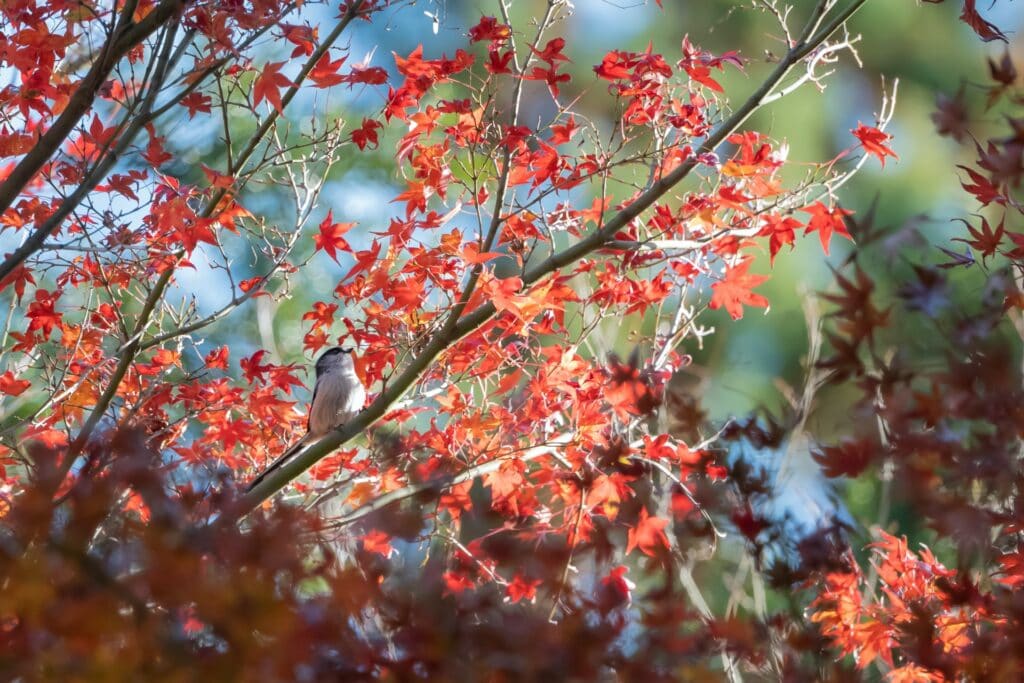
Conflicting Branches
Conflicting branches are typically any tree branches that touch or rub on each other for a long time. When conflicted, the branches may give your plant a distorted appearance. Hence, you may have to remove the branches to increase the aesthetic appeal of your maple tree. Many landscaping experts believe that the Japanese maple tree is more desirable if one can see the whole plant structure. So, by removing a couple of branches, you can create a better-looking maple tree.
Simply choose the branch that is most appealing to you and develop it to a shape that suits your preference and take out the branches you do not like. To avoid conflicting tree branches, cut off any stems growing towards the plant’s interior. This way, you will be able to find the branches heading back to the plant base and remove them.
Central Leaders
Usually, pruning a Japanese maple tree entails choosing where the central leader will be. If you take out the central leader, your tree will be smaller. So, you might need to keep your central leader as the highest point in a mature tree to determine the focal point.
Be careful to allow the tree to grow naturally to choose its central branch before forcing one yourself. Often, a side branch may become dominant and you could end up with a tree branch that is significantly larger than the rest of the branches on the plant.
If you happen to cut off the central leader of a 1-gallon plant or the top accidentally snaps off, don’t be alarmed. The Japanese maple tree naturally develops its main leader. Even if cut off during propagation, it will not affect the overall shape of the plant. Instead, it will just give you more branches.
Branches You Do Not Like
As mentioned earlier, once you have chosen your central leader, go ahead and remove the other branches that do not fit your needs and preferences. This is perhaps why you shouldn’t prune other people’s trees because you may not like a tree branch that another would deem worth developing.
So, basically, you should only remove branches that are not desirable to you. Do not be afraid to remove undesirable branches because they will only get bigger and possibly ruin the shape you had hoped they would adopt.
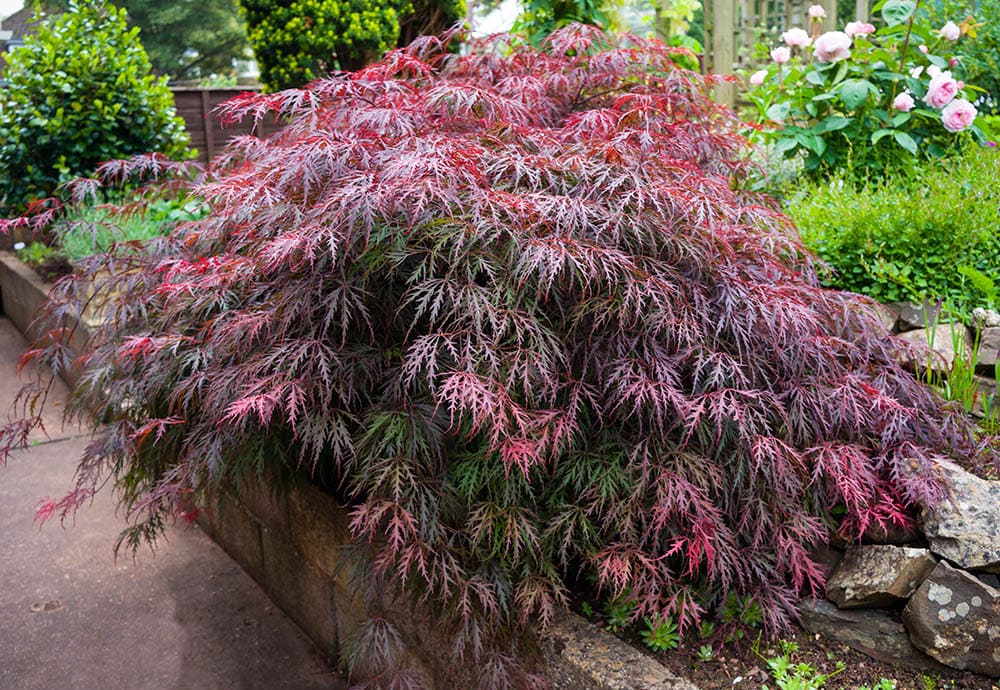
Conclusion
With optimum growing conditions, the Japanese maple tree can live for more than 100 years. This is perhaps why they are a common site in stately homes. In its infancy stage, the Japanese maple produces new growth, usually very thin and minimal on the sides. It may not be appealing but you shouldn’t prune. Give it time to grow to at least 7 gallons to develop branches for better shaping. If you prune too soon, your plant will likely grow taller with wispy branches. So, it’s better to wait until the tree is mature even if you want to restrict the height.
If you have determined that your plant needs trimming, it’s best to wait until winter when the plant’s activities are dormant and the temperatures are lower. Depending on your reason for pruning, you can simply remove the yearly growth, conflicting branches, dead wood, central leaders, and the branches you do not need. If the tree trunk is not more than 2 inches thick, use loopers but if thicker, pruning shears will be ideal. Just make sure you disinfect the shears before and after pruning to avoid infecting your plants.
With our tips for pruning the Japanese maple tree, you should be able to keep your trees looking majestic and beautiful for many years to come.
See also: Is My Japanese Maple Dead (5 Signs to Look For)
- How to Plant a Japanese maple Tree
- How to Prune Japanese maple Trees
- When to Prune Japanese Maple
- Tips on How to and When to Prune Japanese maple Trees
- Frequently Asked Questions on Pruning Japanese maple Trees
- The best way to prune Japanese Maple trees
- When is the best time to prune Japanese maple trees
- Which is the best season for pruning Japanese maple trees
- Principles and practices of pruning trees
Featured Image Credit: Marie Shark, Shutterstock
Contents



